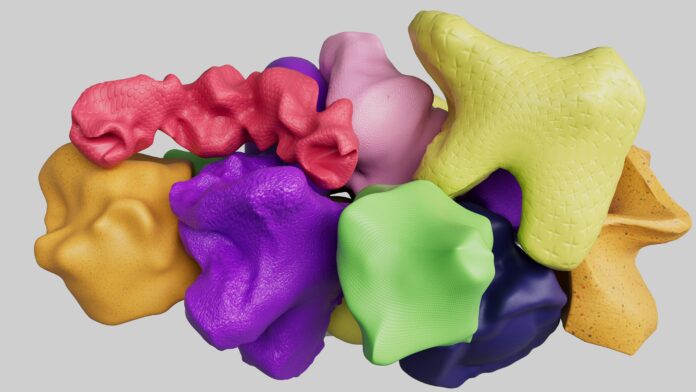The Virtual Method Table (VMT), also known as the Virtual Function Table, is a crucial concept in object-oriented programming languages like C++ and languages based on C++, such as Java and C#. It is a data structure used to implement polymorphism and dynamic dispatch, essential features in object-oriented programming that enable the selection of the appropriate method to execute at runtime based on the type of the object. The VMT accomplishes this by storing pointers to the virtual functions of a class, allowing objects of derived classes to override the behavior of methods defined in their base classes.
In object-oriented programming, a virtual function is a function that can be redefined in a derived class, allowing different implementations of the same method for objects of different classes. When a class declares a function as virtual, it signals to the compiler that the function’s behavior may vary depending on the actual type of the object at runtime. The compiler achieves this by associating each virtual function with an entry in the Virtual Method Table. This table is created by the compiler at compile-time and is used by the runtime environment to determine which function to call when invoking a virtual method on an object.
The Virtual Method Table is typically implemented as an array of function pointers, where each entry corresponds to a virtual function declared in the class. When an object is instantiated, a pointer to its corresponding VMT is added to the object’s memory layout, allowing the runtime environment to access the appropriate VMT when invoking virtual methods on the object. Each class in the inheritance hierarchy has its own VMT, containing pointers to the virtual functions defined in that class and its base classes.
When a virtual function is called on an object, the runtime environment looks up the appropriate function pointer in the object’s VMT based on the function’s index or offset. It then dereferences the function pointer and executes the corresponding function. If the object’s class overrides the virtual function, the runtime environment will call the overridden function defined in the derived class. Otherwise, it will call the base class’s implementation of the virtual function.
The use of the Virtual Method Table enables polymorphism, a fundamental concept in object-oriented programming that allows objects of different types to be treated uniformly through a common interface. Polymorphism allows developers to write code that operates on objects of a base class without needing to know the specific derived class at compile-time. This flexibility enables greater code reuse, modularity, and extensibility, as new derived classes can be added to the system without modifying existing code that operates on the base class interface.
In languages like C++ and Java, the Virtual Method Table is automatically managed by the compiler and runtime environment, transparent to the developer. However, understanding how the VMT works under the hood is crucial for writing efficient and maintainable object-oriented code. Developers must be aware of the performance implications of virtual function calls, as they incur a slight overhead compared to non-virtual function calls due to the need for dynamic dispatch.
The Virtual Method Table is a central component of the runtime environment for object-oriented programming languages and plays a vital role in enabling polymorphism and dynamic dispatch. By associating each virtual function with a function pointer in the VMT, the runtime environment can determine the appropriate function to call at runtime based on the actual type of the object. This mechanism allows developers to write flexible and extensible code that can accommodate changes and additions to the class hierarchy without sacrificing performance or readability.
The Virtual Method Table (VMT) facilitates the implementation of polymorphism in object-oriented programming languages by providing a mechanism for dynamic method dispatch. When a virtual function is called on an object, the runtime environment accesses the appropriate function pointer in the object’s VMT to determine which implementation of the function to execute. This process allows objects of different types to respond differently to the same method invocation, based on their runtime type rather than their static type. As a result, the behavior of virtual functions can be customized and overridden in derived classes, providing a powerful tool for building flexible and extensible software systems.
In languages like C++ and Java, the Virtual Method Table is created and managed automatically by the compiler and runtime environment. When a class declares virtual functions, the compiler generates code to create the VMT and populate it with pointers to the corresponding virtual functions. This process occurs at compile-time and is based on the class’s inheritance hierarchy and method definitions. Each object of a class with virtual functions contains a pointer to its VMT, allowing the runtime environment to perform dynamic method dispatch efficiently at runtime.
The Virtual Method Table is organized as an array of function pointers, with each entry corresponding to a virtual function defined in the class. The order of function pointers in the VMT matches the order of virtual function declarations in the class’s definition, ensuring that method calls are resolved correctly based on their position in the VMT. When a virtual function is called on an object, the runtime environment retrieves the function pointer from the object’s VMT and invokes the corresponding function. This process is transparent to the caller and allows for seamless interaction with objects of different types through a common interface.
Understanding how the Virtual Method Table works is essential for writing efficient and maintainable object-oriented code. While virtual functions provide flexibility and extensibility, they also incur a slight performance overhead compared to non-virtual functions due to the additional indirection involved in dynamic method dispatch. Developers should use virtual functions judiciously, reserving them for cases where polymorphism and dynamic behavior are required, and opting for non-virtual functions in performance-critical code paths.
In addition to enabling polymorphism, the Virtual Method Table plays a crucial role in supporting inheritance and code reuse in object-oriented programming languages. By allowing derived classes to override the behavior of virtual functions defined in their base classes, the VMT enables the implementation of subtype polymorphism, where objects of derived classes can be treated as objects of their base class type. This feature facilitates code reuse and modularity, as common functionality can be defined in base classes and specialized or customized in derived classes as needed.
The Virtual Method Table also provides a mechanism for enforcing contracts and interfaces in object-oriented programming. By defining virtual functions in base classes and requiring derived classes to implement them, developers can establish a common interface for a group of related classes. This approach allows for polymorphic behavior while ensuring that objects adhere to a consistent set of methods and behaviors, regardless of their specific type. This practice promotes code clarity, maintainability, and extensibility by providing clear expectations for how objects should behave in different contexts.
In summary, the Virtual Method Table is a fundamental concept in object-oriented programming that enables polymorphism, dynamic method dispatch, and code reuse. By associating each virtual function with a function pointer in the VMT, the runtime environment can determine the appropriate function to call at runtime based on the object’s actual type. This mechanism provides flexibility and extensibility in object-oriented systems, allowing developers to write code that is more modular, maintainable, and adaptable to changing requirements.














